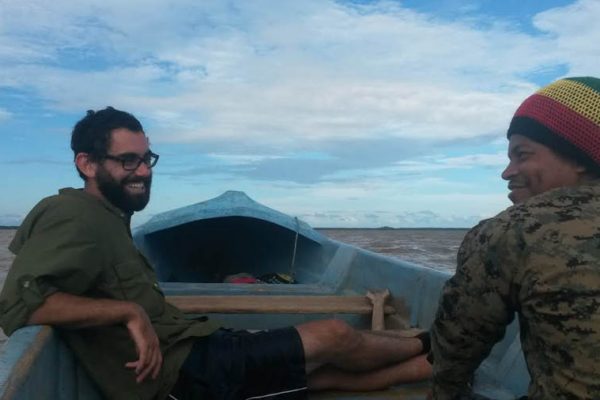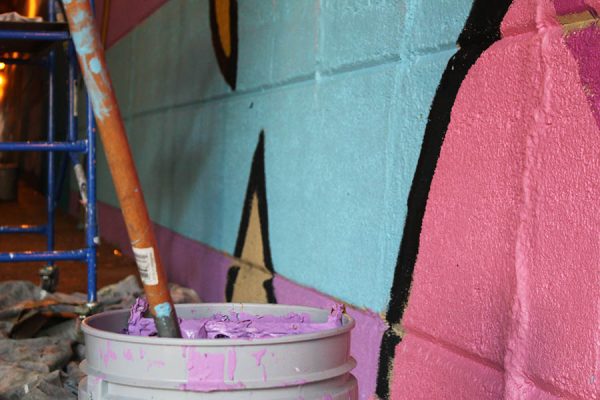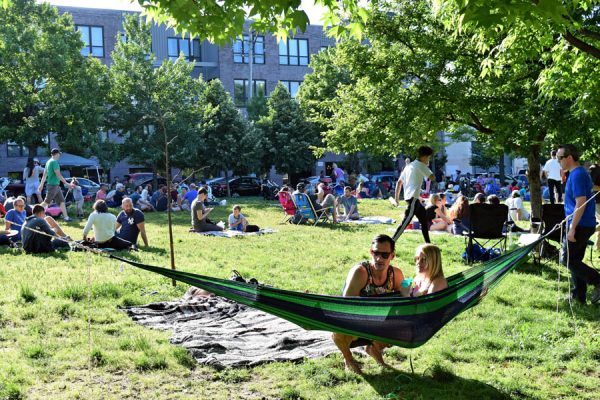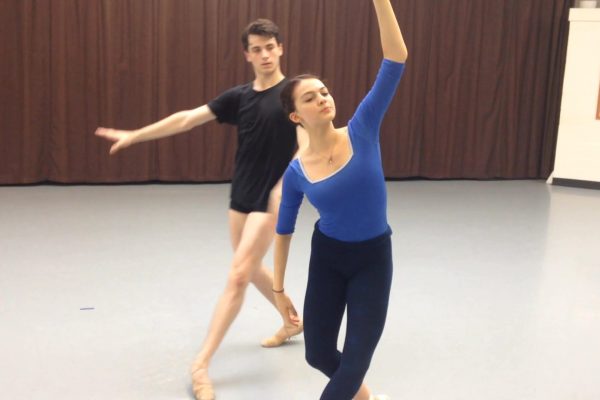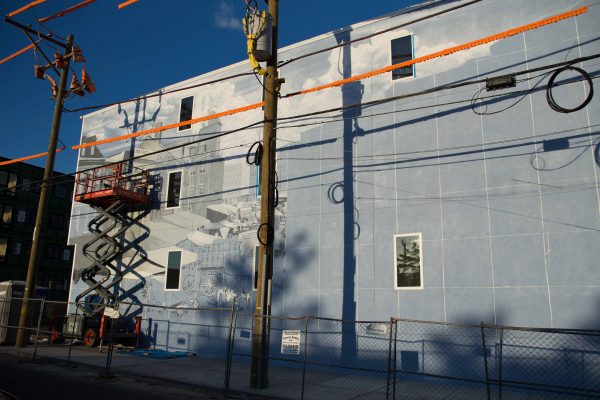The Philly Block Project Wants to Tell Kensington’s Story
The Philadelphia Photo Arts Center (PPAC) debuted the first exhibition of the Philly Block Project at its gallery located at 1400 N. American Street earlier this month.
According to the Philly Block Project, the showcase “provides a visual narrative of South Kensington’s past and present through photographs” and is split up into 3 exhibitions. The portion debuted on March 10 was named “Preface.”
“Preface” will be shown until April 30. The exhibition is open Tuesday to Saturday from 10AM to 6PM each week.
The opening night featured a Philly Block Project community meeting with residents and a panel discussion with the artists. Personal work by the photographers who participated in the Philly Block Project was also shown and will remain on display until April 30.
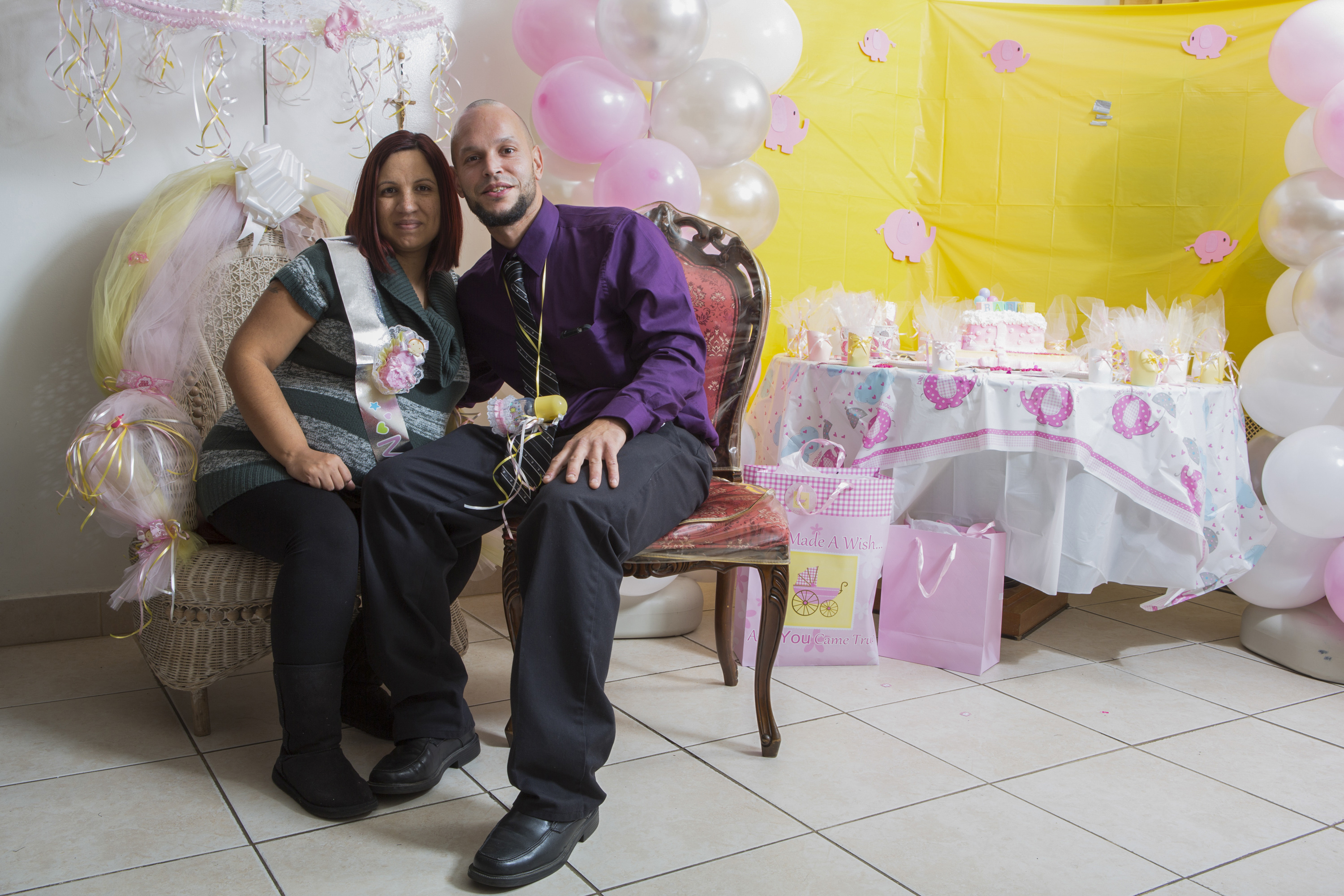
Elizabeth Martinez and Gabriel Espinoza pose for a a portrait during a baby shower in the South Kensington home in November 2015. Photo by Lisa Fairstein/Hank Willis Thomas Studio. 2015.
The community involvement in “Preface” is telling of the project’s focus on telling the stories of those living in Kensington. Sarah Stolfa, founder of PPAC, said a monthly community meeting will be held in the space regarding Philly Block Project.
“We invite anyone in the neighborhood or anyone interested in the project to come… to have dialogue about the project. They act as advisors for us as we start to make connections and learn more about the neighborhood but also voice their creativity and ideas,” Stofla said.
The Philly Block Project is a group effort by the PPAC, photographer Hank Willis Thomas, curator Kalia Brooks and several other artists with varying techniques.
The project focuses specifically on a 4-block radius in South Kensignton. Sarah Stolfa, founder of PPAC, told the Spirit News more about the conception of the Philly Block Project.
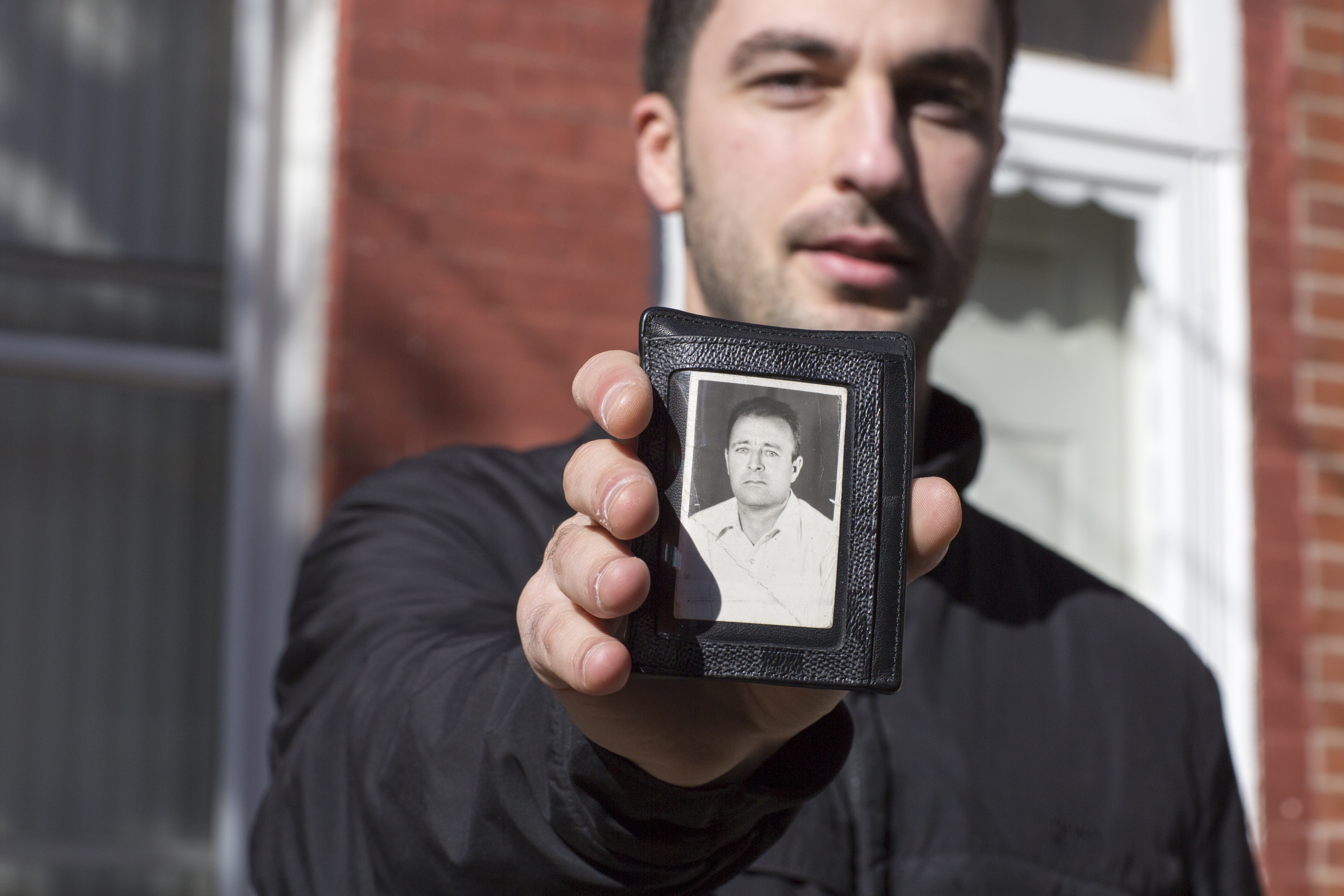
Hakan Ibisi carries a photograph of his grandfather in his wallet. Ibisi was photographed for the Philly Block Project, a collaboration between the Philadelphia Photo Arts Center and Hank Willis Thomas. Photo by Wyatt Gallery/Hank Willis Thomas Studio.
“We call [Kensington] home… We are a young organization… and came to the realization people from the neighborhood are not coming into our space and not taking advantage of the resources and the opportunities we have here,” Stofla said. “We wanted to build relationships and you know, cross those barriers and erase those barriers… We’d really like this project to be a collaborative project with people who live here.”
Residents submitted historical photos to be showcased starting on June 9. On September 10, present-day images of Kensington, shot by Thomas and other photographers, like Hiroyuki Ito and Will Steacy, will be displayed.
Stofla talked about why multiple artists were asked to participate.
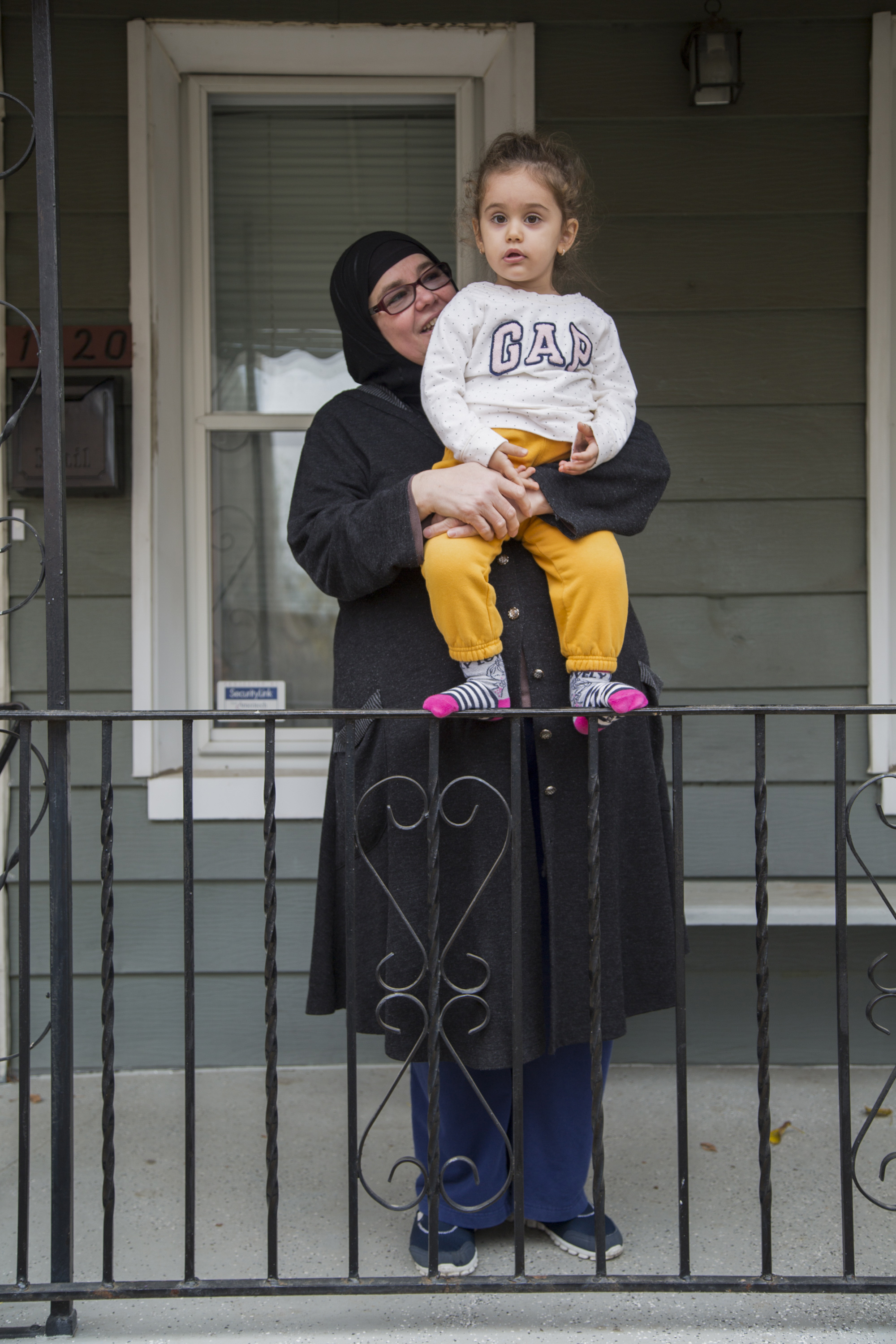
Sirma Celep, left, holds her granddaughter, Armina, on the front porch in November 2015. The duo was photographed for the Philly Block Project in November 2015, a collaboration between the Philadelphia Photo Arts Center and Hank Willis Thomas. Photo by Wyatt Gallery/Hank Willis Thomas Studio.
“After speaking to people, [Thomas] felt that there were… so many stories and diversity going on in that [area] that having collaborating photographers also working on the project would better be able to reflect that diversity of that neighborhood,” Stofla said. “[The artists] all bring something very different to the project and that’s why [Thomas] asked them to be involved.”
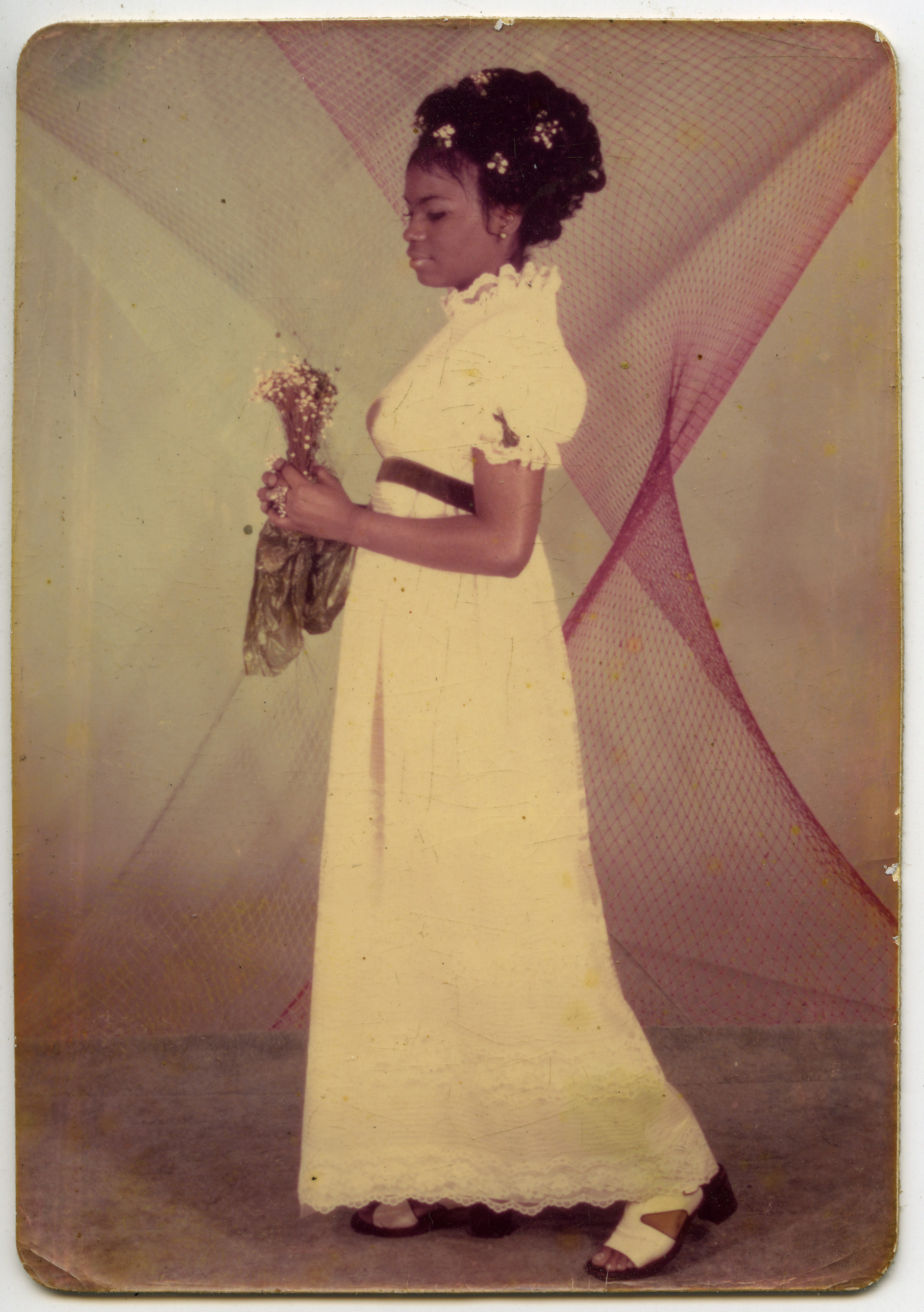
Portrait of Ethel May Haines, contributed by her grandson Roi Greene. “We used to call her Ethel May ‘All Day’ because she was always busy, working for her family and her community. This photo was taken in the 70’s, but she continued to wear flowers in her hair for as long as I remember,” Roi Greene said.
Telling the stories of Kensington’s residents, Stofla said, is an attempt to combat the skewed image the media portrays of Kensington.
“I think the perception and the news and the images that have been produced in Kensington assist in creating a narrative very on the negative side. It’s all about the challenges, right, that Kensington has,” Stofla said. “Kensington has its challenges. We’re not trying to erase those challenges or say they don’t exist, but I don’t think that the current narrative of Kensignton embraces the life and the cultural assets and the energy that lives here.”
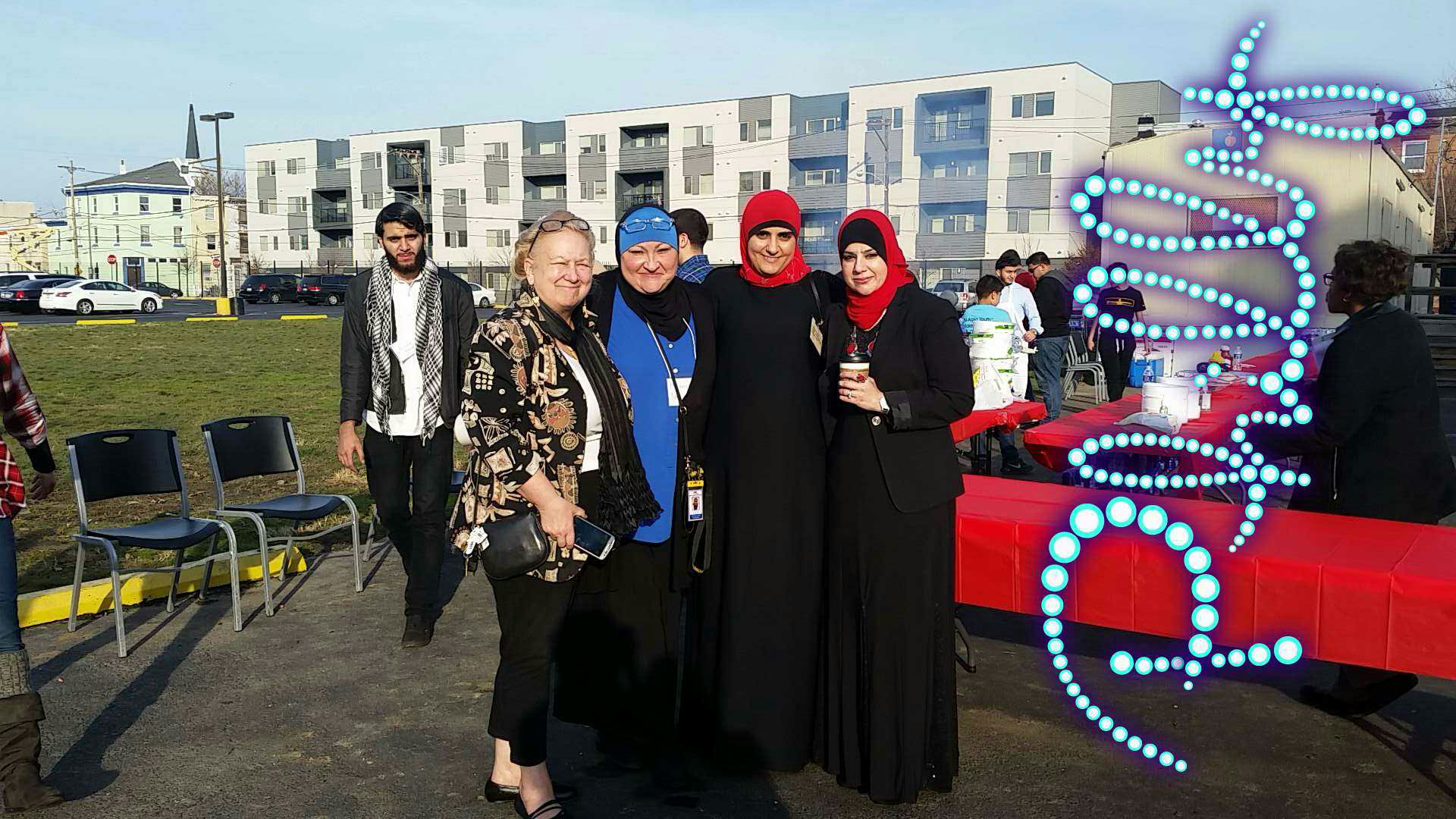
Photo by Donia Ahmad. L to R: Mohammed Ibrahim, Patricia Coyne, Miriam Abuawwadeh, Donia Mustafa, Nabeela Ibrahim – pose together at the Al-Aqsa Solidarity barbeque December 12, 2015. “I got to meet Patricia. It was a day for us to meet and show that we are all on e community.”
When asked if they would consider taking a project like this to other parts of the city, Stofla mentioned the time-consuming matter of going door to door and person to person to find these stories and build relationships. Plus, as mentioned before, the Philly Block Project is special to PPAC because of their location in Kensington.
“It’s not off the table but it’s not in the forecast… Doing this in another neighborhood just changes what it is. A lot of this project is about us connecting with our immediate neighbors,” she said.

